
Panajachel: The Gateway to Lake Atitlán's Splendor
Discover Panajachel, the vibrant lakeside town in Guatemala, offering stunning views, rich culture, and a gateway to the wonders of Lake Atitlán and its surrounding volcanoes.
Panajachel, often referred to as 'Pana,' is an enchanting town nestled on the shores of Lake Atitlán in Guatemala. The town is renowned for its breathtaking views of the lake, surrounded by three majestic volcanoes: San Pedro, Atitlán, and Tolimán. The natural beauty of the area is complemented by the vibrant culture and rich history of the indigenous communities that call this place home. As you explore Panajachel, you'll be captivated by its charming blend of traditional Maya culture and modern amenities. The bustling main street, Calle Santander, is lined with colorful handicraft markets, cozy cafes, and diverse restaurants offering both local and international cuisine. Be sure to visit the Church of St. Francis of Assisi, a historical landmark that showcases the town's colonial past. One of the main attractions of Panajachel is, of course, Lake Atitlán itself. You can take a leisurely boat ride across its shimmering waters to visit the nearby villages, each with its own unique character and traditions. The lake's serene environment is perfect for activities such as kayaking, paddleboarding, and even yoga sessions by the shore. For the more adventurous, hiking up the surrounding volcanoes offers an unforgettable experience with panoramic views of the region. Panajachel is not just about stunning landscapes; it's also a hub for cultural exchange. The town hosts various festivals and events throughout the year, celebrating everything from traditional music and dance to contemporary art. Engaging with the local artisans and learning about their crafts, such as weaving and pottery, adds a deeper dimension to your visit. Whether you're seeking relaxation or adventure, Panajachel provides a perfect balance of both, making it an ideal destination for travelers of all kinds.
Local tips in Panajachel
- Visit the local markets early in the morning for the freshest produce and unique handicrafts.
- Take a boat tour to explore the nearby villages around Lake Atitlán.
- Wear comfortable walking shoes as the town's streets can be uneven.
- Try traditional Guatemalan dishes like Pepian and Kak’ik at local restaurants.
- Bring cash, as many small vendors and local businesses do not accept credit cards.
- Check the weather forecast, as afternoons can often bring rain, especially during the wet season.
Panajachel: The Gateway to Lake Atitlán's Splendor
Panajachel, often referred to as 'Pana,' is an enchanting town nestled on the shores of Lake Atitlán in Guatemala. The town is renowned for its breathtaking views of the lake, surrounded by three majestic volcanoes: San Pedro, Atitlán, and Tolimán. The natural beauty of the area is complemented by the vibrant culture and rich history of the indigenous communities that call this place home. As you explore Panajachel, you'll be captivated by its charming blend of traditional Maya culture and modern amenities. The bustling main street, Calle Santander, is lined with colorful handicraft markets, cozy cafes, and diverse restaurants offering both local and international cuisine. Be sure to visit the Church of St. Francis of Assisi, a historical landmark that showcases the town's colonial past. One of the main attractions of Panajachel is, of course, Lake Atitlán itself. You can take a leisurely boat ride across its shimmering waters to visit the nearby villages, each with its own unique character and traditions. The lake's serene environment is perfect for activities such as kayaking, paddleboarding, and even yoga sessions by the shore. For the more adventurous, hiking up the surrounding volcanoes offers an unforgettable experience with panoramic views of the region. Panajachel is not just about stunning landscapes; it's also a hub for cultural exchange. The town hosts various festivals and events throughout the year, celebrating everything from traditional music and dance to contemporary art. Engaging with the local artisans and learning about their crafts, such as weaving and pottery, adds a deeper dimension to your visit. Whether you're seeking relaxation or adventure, Panajachel provides a perfect balance of both, making it an ideal destination for travelers of all kinds.
When is the best time to go to Panajachel?
Iconic landmarks you can’t miss
Porta Hotel del Lago
Discover tranquility at Porta Hotel del Lago, where stunning views of Lake Atitlán and luxurious accommodations await your arrival.

Reserva Natural Atitlán
Explore the breathtaking landscapes and rich biodiversity of Reserva Natural Atitlán, a premier nature preserve near Lake Atitlán, Guatemala.

Reserva Natural Cerro Tzankujil
Experience the breathtaking beauty of Reserva Natural Cerro Tzankujil, a serene nature preserve with stunning views of Lake Atitlán and rich biodiversity.

Hotel La Riviera de Atitlán
Experience the beauty and tranquility of Lake Atitlán at Hotel La Riviera de Atitlán, a perfect blend of comfort and local culture.

Atitlan Hotel
Discover tranquility and breathtaking views at Atitlan Hotel, your perfect retreat in the heart of Panajachel, Guatemala.

Selina Atitlan
Experience the perfect blend of relaxation and productivity at Selina Atitlan, nestled by the stunning shores of Lake Atitlán in Guatemala.

Eagle's Nest Atitlán - Yoga, Dance & Community
Discover tranquility and wellness at Eagle's Nest Atitlán, a serene resort hotel offering yoga, community, and breathtaking views of Lake Atitlán.

Posada Don Rodrigo
Experience comfort and cultural charm at Posada Don Rodrigo, your serene retreat by Lake Atitlán in Panajachel, Guatemala.

Museo Lacustre de Atitlan
Explore the rich history and underwater archaeology of Lake Atitlan at Museo Lacustre de Atitlan in Panajachel, Guatemala.

Hotel Utz-Jay
Experience the perfect blend of comfort and wellness at Hotel Utz-Jay, your serene retreat in the heart of Panajachel, Guatemala.

The Little Spoon
Experience the vibrant flavors of Guatemala at The Little Spoon, a culinary delight in the heart of Panajachel, offering a unique twist on traditional dishes.

Dreamboat Hostel
Discover the charm of Panajachel at Dreamboat Hostel, where comfort meets adventure by the shores of Lake Atitlán.
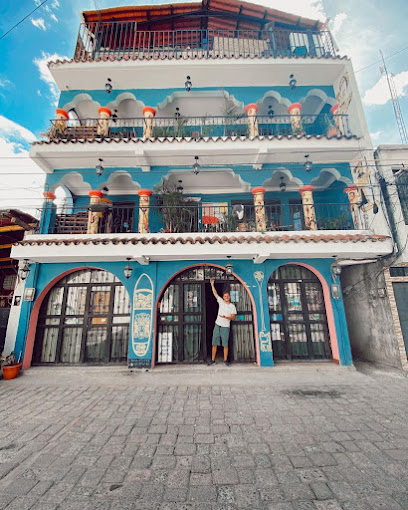
VILLAS JUCANYA
Experience unparalleled tranquility at Villas Jucanya, a luxury hotel nestled on the stunning shores of Lake Atitlán in Panajachel, Guatemala.

Hospedaje El Viajero
Discover the charm of Panajachel at Hospedaje El Viajero, your cozy retreat near Lake Atitlán's stunning landscapes and vibrant culture.

Hotel San Buenaventura de Atitlán
Experience the tranquil beauty of Lake Atitlán at Hotel San Buenaventura, where comfort meets stunning natural landscapes in Guatemala.

Unmissable attractions to see
Parque Central de Antigua Guatemala
Discover the vibrant heart of Antigua Guatemala at Parque Central, where history, culture, and community come together in a picturesque setting.

Arco de Santa Catalina
Discover the iconic Arco de Santa Catalina in Antigua Guatemala, a stunning landmark steeped in history and surrounded by breathtaking views.

Cerro de La Cruz
Discover breathtaking views of Antigua Guatemala at Cerro de La Cruz, a serene hike perfect for all travelers seeking natural beauty and rich history.

Iglesia de la Merced
Explore the striking Iglesia de la Merced in Antigua Guatemala, a stunning blend of Baroque architecture and rich cultural heritage.

Sitio Arqueológico Iximche
Explore the ancient Mayan heritage at Iximche, an archaeological gem in Tecpán, Guatemala, surrounded by breathtaking landscapes.

Convento Capuchinas
Discover the tranquil beauty and rich history of Convento Capuchinas in Antigua Guatemala, a serene retreat with stunning architecture.

Tanque La Unión
Experience the serene beauty and historical significance of Tanque La Unión in Antigua Guatemala, a tranquil park perfect for relaxation.

Santuario de San Felipe de Jesús
Explore the Santuario de San Felipe de Jesús, a stunning Catholic church in Antigua Guatemala, rich in history and architectural beauty.

Reserva Natural Atitlán
Discover the breathtaking landscapes and rich biodiversity of Reserva Natural Atitlán, a nature preserve offering adventures and tranquility by Lake Atitlán.

Reserva Natural Cerro Tzankujil
Discover the natural beauty of Reserva Natural Cerro Tzankujil, a serene haven for nature lovers and adventure seekers in San Marcos La Laguna, Guatemala.

Plaza y Mercado Santo Tomás
Explore the vibrant Plaza y Mercado Santo Tomás in Chichicastenango, a cultural gem brimming with authentic crafts, cuisine, and local traditions.

Lake Atitlán
Experience the serene beauty and vibrant culture of Lake Atitlán, a stunning natural wonder surrounded by majestic volcanoes in Guatemala.

San José Cathedral Antigua
Discover the architectural splendor and cultural richness of San José Cathedral, a historic gem in Antigua Guatemala that enchants every visitor.

Convento Santa Clara
Explore the serene beauty and rich history of Convento Santa Clara, a must-see attraction in Antigua Guatemala's vibrant cultural landscape.

Eagle's Nest Atitlán - Yoga, Dance & Community
Discover tranquility and community at Eagle's Nest Atitlán, a serene resort hotel on the stunning shores of Lake Atitlán in San Marcos La Laguna.

Essential places to dine
Circus Bar
Discover Circus Bar in Panajachel - where delicious pizza meets warm hospitality in a cozy atmosphere.

Guajimbo's
Experience authentic Uruguayan cuisine at Guajimbo's in Panajachel – where every dish tells a story of flavor and tradition.

Deli Jasmin
Discover delicious local flavors at Deli Jasmin in Panajachel – your gateway to authentic Guatemalan cuisine amidst stunning lake views.

Mister Jon's
Experience the best of local and international cuisine at Mister Jon's in Panajachel – where flavor meets hospitality.

Atitlán Rest y Café
Experience authentic Guatemalan cuisine with breathtaking views at Atitlán Rest y Café in Panajachel.
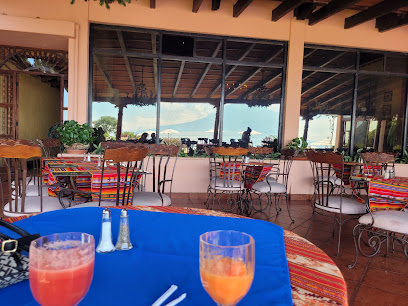
Restaurante Lena’s Atlantis
Experience the best of Guatemalan cuisine with international flair at Restaurante Lena’s Atlantis in Panajachel.

Restaurante Hana
Discover the exquisite flavors of Japan at Restaurante Hana in Panajachel - a culinary haven for tourists seeking authentic Japanese cuisine.
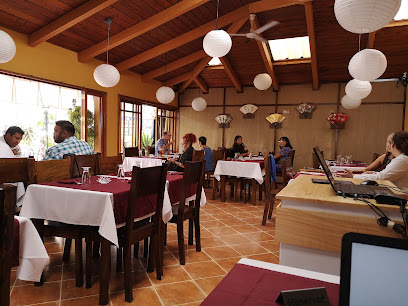
The Little Spoon
Experience authentic Guatemalan flavors at The Little Spoon in Panajachel—where fresh ingredients meet warm hospitality.

Restaurante El Bistro
Experience the vibrant flavors of Guatemalan cuisine at Restaurante El Bistro in Panajachel, where every meal is a celebration of taste.

Delhi 6
Experience authentic Indian cuisine at Delhi 6 in Panajachel – where vibrant flavors meet traditional cooking.

Amaranto Panajachel
Experience exceptional dining at Amaranto Panajachel with unique cocktails and a welcoming atmosphere in the heart of Guatemala's scenic beauty.

Lazzaroni, Panajachel
Experience delightful dining at Lazzaroni in Panajachel - where local flavors meet international cuisine amidst breathtaking lake views.

Tuscani
Experience exquisite dining at Tuscani in Panajachel, where local flavors meet international cuisine amidst a charming atmosphere.

Las Chinitas
Discover authentic Guatemalan cuisine at Las Chinitas in Panajachel – where every meal is a celebration of local flavors and hospitality.

Famosos Shucos
Discover authentic Guatemalan flavors at Famosos Shucos in Panajachel – a culinary haven for street food lovers.

Markets, malls and hidden boutiques
Sandra's Health Food Store
Discover a wide range of organic health foods and local products at Sandra's Health Food Store in Panajachel, Guatemala.

Intermedio shop
Discover the flavors of Guatemala at Intermedio Shop in Panajachel, where local delicacies meet international delights in a charming food store.

TROPICA VINTAGE
Explore Tropica Vintage in Panajachel for unique vintage clothing and local gifts that capture the essence of Guatemalan culture.

Poncho's Bags
Explore Poncho's Bags in Panajachel for unique, handcrafted handbags that showcase Guatemalan artistry and vibrant culture.

Abracadabra
Explore Abracadabra in Panajachel for unique Guatemalan gifts and handcrafted treasures that capture the essence of local culture.

Angie's Clothing
Explore the vibrant fashion of Panajachel at Angie's Clothing, where local culture meets unique style in every piece.

Mercado de artesanías
Discover the vibrant Mercado de Artesanías in Panajachel, your gateway to authentic Guatemalan crafts and cultural treasures.

Tienda de Cerámica STONEWARE Mayan-ke
Immerse yourself in the vibrant craftsmanship of Mayan ceramics at Tienda de Cerámica STONEWARE Mayan-ke in Panajachel, Guatemala.

Tienda El Güipil
Explore the vibrant artisan culture of Guatemala at Tienda El Güipil, your destination for authentic handcrafted treasures in Panajachel.

Romantic Fashion Boutique En Varieties
Discover unique clothing at Romantic Fashion Boutique En Varieties in Panajachel, where traditional textiles meet contemporary style for a truly memorable shopping experience.

Totis Shop
Explore Totis Shop in Panajachel for authentic Guatemalan gifts and handicrafts, a perfect blend of culture and creativity.

Tatuajes Temporales
Discover Tatuajes Temporales in Panajachel, a treasure trove of unique gifts and artistic temporary tattoos celebrating Guatemalan culture.

Rancho Grande
Explore the colorful world of Guatemalan fashion at Rancho Grande, a premier clothing store in the heart of Panajachel.

Variedades panajachel
Discover unique jewelry, stylish footwear, and quality second-hand clothing at Variedades Panajachel, your local shopping haven in Guatemala.

Boutique Malía Shop
Explore Boutique Malía in Panajachel for unique women's fashion that beautifully reflects Guatemala's rich culture and vibrant textile traditions.

Essential bars & hidden hideouts
Circus Bar
Experience the best pizza and Italian cuisine at Circus Bar in Panajachel, offering gluten-free options and a vibrant atmosphere for all diners.

Pana Rock
Experience the vibrant nightlife at Pana Rock, a premier bar in Panajachel, Guatemala, featuring live music, delicious drinks, and stunning lake views.

Restaurante Lena’s Atlantis
Discover the vibrant mix of local cuisine and nightlife at Restaurante Lena’s Atlantis in the heart of Panajachel, Guatemala.
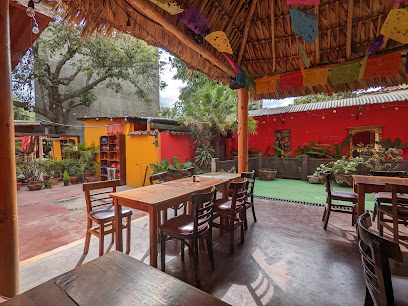
Cafe Moka
Discover Café Moka in Panajachel – a cozy bar offering local coffee and delightful views of Lake Atitlán, perfect for tourists seeking relaxation.
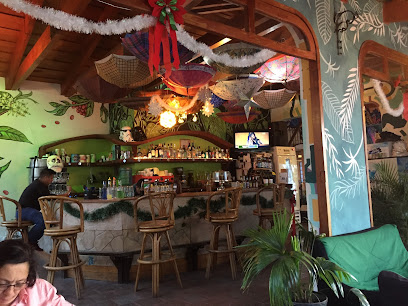
Simoneta Mixology Cantina
Dive into the vibrant cocktail culture at Simoneta Mixology Cantina, the ultimate destination for unique drinks and a lively atmosphere in Panajachel.

Exotic Drinks
Discover Exotic Drinks in Panajachel, a vibrant lakeside bar offering exquisite cocktails and stunning views of Lake Atitlán.
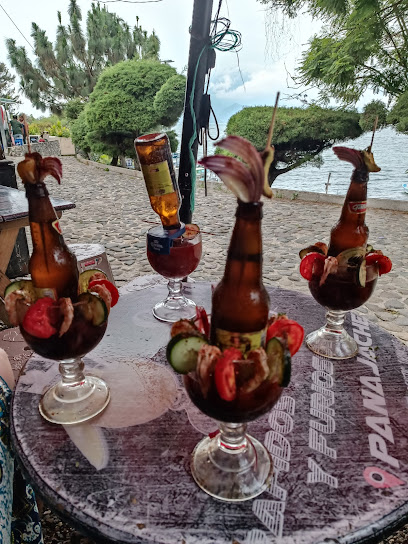
Chapiteau Circus Bar
Discover Chapiteau Circus Bar in Panajachel, a lively restaurant and musical club offering exquisite tapas and a diverse wine selection for an unforgettable night.

Selina Beach Bar
Discover the vibrant atmosphere and stunning views at Selina Beach Bar, your go-to destination in Panajachel for relaxation and entertainment.
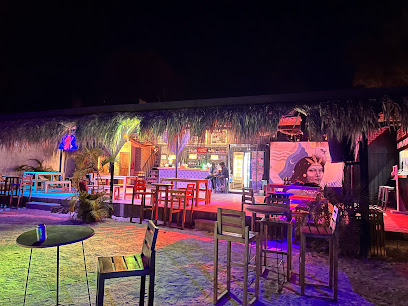
El Tecomate Cocktail Bar
Experience vibrant nightlife at El Tecomate Cocktail Bar in Panajachel, offering creative cocktails and a lively atmosphere near Lake Atitlán.

El Roof
Discover the vibrant flavors of El Roof in Panajachel, where grilled delights and live music create an unforgettable dining experience.

Tipzy Goat
Experience the vibrant nightlife of Panajachel at Tipzy Goat, your go-to bar for delicious drinks and unforgettable memories.
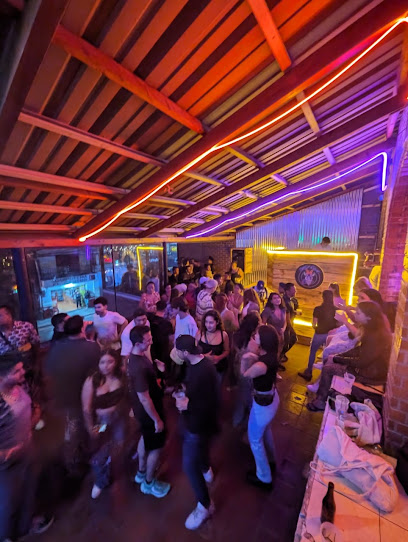
Hanna's Bar
Discover the lively ambiance and refreshing drinks at Hanna's Bar in Panajachel, where local culture meets vibrant nightlife.

Small Bar La Azotea
Discover the vibrant atmosphere of Small Bar La Azotea in Panajachel, where stunning views and refreshing drinks await at Lake Atitlán.

Element
Experience the vibrant nightlife at Element, a must-visit bar in Panajachel offering a diverse drink menu and lively atmosphere.
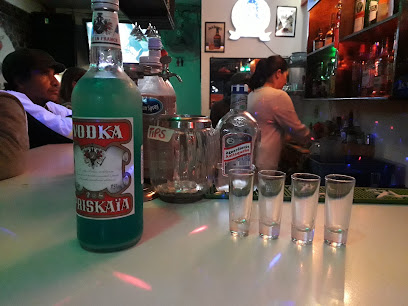
Blue Sun
Discover the lively Blue Sun bar in Panajachel, where refreshing drinks and vibrant atmosphere create the perfect getaway for travelers.
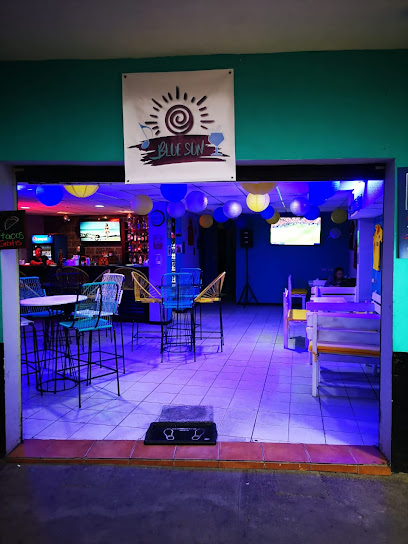
Local Phrases
-
- HelloHola
[OH-lah] - GoodbyeAdiós
[ah-DYOHS] - YesSí
[see] - NoNo
[noh] - Please/You're welcomePor favor/De nada
[pohr fah-BOHR/deh NAH-dah] - Thank youGracias
[GRAH-syahs] - Excuse me/SorryPerdón
[pehr-DOHN] - How are you?¿Cómo estás?
[KOH-moh ehs-TAHS] - Fine. And you?Bien. ¿Y tú?
[byehn. ee too] - Do you speak English?¿Hablas inglés?
[AH-blahs een-GLEHS] - I don't understandNo entiendo
[noh ehn-TYEHN-doh]
- HelloHola
-
- I'd like to see the menu, pleaseMe gustaría ver el menú, por favor
[meh goos-tah-REE-ah behr ehl meh-NOO, pohr fah-BOHR] - I don't eat meatNo como carne
[noh KOH-moh KAHR-neh] - Cheers!¡Salud!
[sah-LOOD] - I would like to pay, pleaseMe gustaría pagar, por favor
[meh goos-tah-REE-ah pah-GAHR, pohr fah-BOHR]
- I'd like to see the menu, pleaseMe gustaría ver el menú, por favor
-
- Help!¡Ayuda!
[ah-YOO-dah] - Go away!¡Vete!
[VEH-teh] - Call the Police!¡Llama a la Policía!
[YAH-mah ah lah poh-LEE-see-ah] - Call a doctor!¡Llama a un médico!
[YAH-mah ah oon MEH-dee-koh] - I'm lostEstoy perdido
[ehs-TOY pehr-DEE-doh] - I'm illEstoy enfermo
[ehs-TOY ehn-FEHR-moh]
- Help!¡Ayuda!
-
- I'd like to buy...Me gustaría comprar...
[meh goos-tah-REE-ah kohm-PRAR] - I'm just lookingSólo estoy mirando
[SOH-loh ehs-TOY meer-AHN-doh] - How much is it?¿Cuánto cuesta?
[KWAHN-toh KWEHS-tah] - That's too expensiveEsto es demasiado caro
[EHS-toh ehs deh-mah-SYA-doh KA-roh] - Can you lower the price?¿Puede rebajar el precio?
[PWEH-deh reh-bah-HAHR ehl PREH-syoh]
- I'd like to buy...Me gustaría comprar...
-
- What time is it?¿Qué hora es?
[keh OH-rah ehs] - It's one o'clockEs la una
[ehs lah OO-nah] - Half past (10)Las diez y media
[lahs dyehs ee MEH-dyah] - MorningMañana
[mah-NYAH-nah] - AfternoonTarde
[TAHR-deh] - EveningNoche
[NOH-cheh] - YesterdayAyer
[ah-YEHR] - TodayHoy
[oy] - TomorrowMañana
[mah-NYAH-nah] - 1Uno
[OO-noh] - 2Dos
[dohs] - 3Tres
[trehs] - 4Cuatro
[KWAH-troh] - 5Cinco
[SEEN-koh] - 6Seis
[sayss] - 7Siete
[SYEH-teh] - 8Ocho
[OH-choh] - 9Nueve
[NWEH-veh] - 10Diez
[dyehs]
- What time is it?¿Qué hora es?
-
- Where's a/the...?¿Dónde está el/la...?
[DOHN-deh ehs-TAH ehl/lah] - What's the address?¿Cuál es la dirección?
[KWAHL ehs lah dee-rehk-SYOHN] - Can you show me (on the map)?¿Puedes mostrarme (en el mapa)?
[PWEH-dehs mohs-TRAHR-meh (ehn ehl MAH-pah)] - When's the next (bus)?¿Cuándo es el próximo (autobús)?
[KWAHN-doh ehs ehl PROH-ksee-moh (ow-toh-BOOS)] - A ticket (to ....)Un boleto (a ...)
[oon boh-LEH-toh (ah ...)]
- Where's a/the...?¿Dónde está el/la...?
History of Panajachel
-
Panajachel, located on the shores of Lake Atitlán, has a rich pre-Columbian history. The area was originally inhabited by the Kaqchikel Maya, who established thriving communities long before the arrival of Spanish colonizers. The region's fertile land and abundant natural resources made it an ideal location for settlement and agriculture.
-
In the early 16th century, Spanish conquistadors, led by Pedro de Alvarado, arrived in the region. The conquest led to the subjugation of the Kaqchikel people and the establishment of Spanish colonial rule. Panajachel became an important administrative and religious center during the colonial period, with the construction of significant buildings such as the Church of San Francisco, which still stands today.
-
Following Guatemala's independence from Spain in 1821, Panajachel, like much of the country, underwent significant changes. The Liberal Reforms of the late 19th century aimed to modernize the country, promoting infrastructure development and the coffee industry. Panajachel's strategic location by Lake Atitlán made it a vital hub for trade and transportation during this period.
-
The 20th century saw Panajachel transform into a popular tourist destination. With its stunning natural beauty and cultural richness, the town attracted visitors from around the world. The 1960s and 1970s, in particular, marked a boom in tourism, as Panajachel became known for its vibrant markets, artisan crafts, and scenic views of Lake Atitlán and the surrounding volcanoes.
-
The Guatemalan Civil War (1960-1996) had a profound impact on Panajachel. The conflict resulted in significant violence and displacement, affecting the local population. Despite these challenges, Panajachel remained a resilient community, with efforts to preserve its cultural heritage and support local artisans and businesses continuing throughout the period.
-
Today, Panajachel is a bustling town that seamlessly blends its historical roots with modern amenities. It serves as a gateway to exploring Lake Atitlán and the surrounding highlands. Visitors can enjoy a rich tapestry of cultural experiences, from traditional Mayan ceremonies to contemporary festivals and events. The town's markets, restaurants, and accommodations cater to a diverse array of travelers, making it a must-visit destination in Guatemala.
Panajachel Essentials
-
Panajachel is located on the north shore of Lake Atitlán in Guatemala. The nearest international airport is La Aurora International Airport in Guatemala City, approximately 112 kilometers away. From Guatemala City, you can take a shuttle bus or a private taxi to Panajachel, which typically takes around 3 to 4 hours depending on traffic. Public buses known as 'chicken buses' and private shuttles are also available for budget travelers.
-
Panajachel is a small town, and many places of interest are within walking distance. Tuk-tuks (auto-rickshaws) are a popular and affordable way to get around town. For exploring the lake and its surrounding villages, boats (lanchas) are available at the docks. Buses and private shuttles can take you to nearby towns and cities. Renting a bicycle or scooter is another option for those who prefer more independence.
-
The official currency in Guatemala is the Guatemalan Quetzal (GTQ). Credit cards are widely accepted in hotels, restaurants, and larger shops in Panajachel, but it's advisable to carry cash for smaller establishments and market purchases. ATMs are available in town, but it's wise to withdraw sufficient cash before heading to more remote areas.
-
Panajachel is generally safe for tourists, but like any travel destination, it is important to take standard precautions. Avoid walking alone at night, especially in poorly lit areas. Keep an eye on your belongings in crowded places such as markets and docks. Some areas, like the Sololá market, have higher instances of petty theft targeting tourists, so remain vigilant.
-
In case of emergency, dial 120 for medical assistance, 122 for the police, and 123 for the fire department. The local hospital and clinic are available for medical emergencies. It is recommended to have travel insurance that covers medical emergencies. Pharmacies are available in Panajachel for minor health issues and over-the-counter medications.
-
Fashion: Do dress modestly, especially when visiting religious sites. Avoid wearing overly revealing clothing. Religion: Do respect local customs and traditions. Always ask for permission before photographing religious ceremonies. Public Transport: Do be respectful and considerate of others on public transport. Don't eat or drink on public buses. Greetings: Do greet people with a handshake and a friendly smile. A simple 'Buenos días' goes a long way. Eating & Drinking: Do try local dishes and accept food offerings graciously. Don’t refuse hospitality, as it is considered impolite.
-
To experience Panajachel like a local, visit the local markets where you can buy fresh produce and traditional Guatemalan crafts. Engage with locals, as they are often friendly and willing to share stories about the town's history and culture. Don’t miss taking a boat trip to nearby villages like San Juan and Santiago Atitlán to experience the unique cultures and art. For a unique experience, visit the Reserva Natural Atitlán for hiking and zip-lining with stunning views of the lake.
Trending Landmark in Panajachel
-
Porta Hotel del Lago
-
Reserva Natural Atitlán
-
Reserva Natural Cerro Tzankujil
-
Hotel La Riviera de Atitlán
-
Atitlan Hotel
-
Selina Atitlan
-
Eagle's Nest Atitlán - Yoga, Dance & Community
-
Posada Don Rodrigo
-
Museo Lacustre de Atitlan
-
Hotel Utz-Jay
-
The Little Spoon
-
Dreamboat Hostel
-
VILLAS JUCANYA
-
Hospedaje El Viajero
-
Hotel San Buenaventura de Atitlán
Nearby Cities to Panajachel
-
Things To Do in Lake Atitlán
-
Things To Do in Chichicastenango
-
Things To Do in Quetzaltenango
-
Things To Do in Antigua Guatemala
-
Things To Do in Guatemala City
-
Things To Do in Chalchuapa
-
Things To Do in Santa Ana
-
Things To Do in Copán Ruinas
-
Things To Do in San Salvador
-
Things To Do in La Libertad
-
Things To Do in Suchitoto
-
Things To Do in Santa Rosa de Copán
-
Things To Do in Rio Dulce
-
Things To Do in Gracias
-
Things To Do in Flores










